Maybe you are looking for a jolt to your visual expression and are looking to branch out from your comfort zone by incorporating video, but had no idea how to start. Here’s a way! The 2-day workshop “Video As A Sculptural Medium” will help you begin your understanding of shooting and editing video. Awesomer!
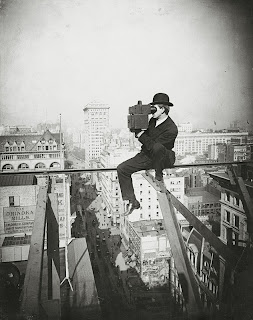
More practical minded? How about rolling up your sleeves and getting to work making an environmentally friendly table? In “Eco-Tables” you will make the steel base (and learn the basics of welding) and glass top from recycled glass (learning the art of fusing).
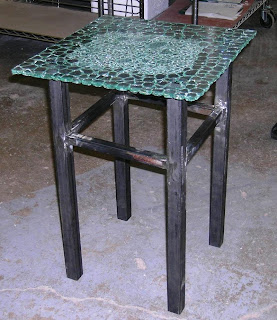
recycled glass and steel table

glass sconce by Nancy Donnelly
Or “Making Glass Sconces for Your Home” where you learn to cut, fuse and shape glass into a sconce. You will make the hardware to mount the light. Build your own dream house – from the inside out! Awesome Domestic Bliss!
____________________________________________________
Fall 2011 Schedule
(Lampworking Class Schedule next posting)
___________________________________________________
Class 1120- Beginner’s Glass Lover’s Weekend
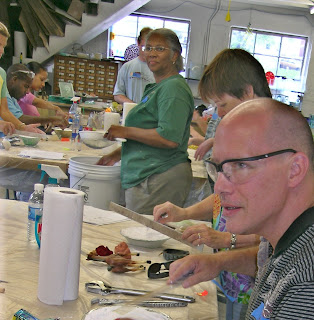
Our most popular class, this is the fastest way to learn all aspects of warm glass in the shortest amount of time! Under the supervision of a professional glass artist you will learn the fundamentals of fusing, slumping and dimensional kiln casting. Everything from bowls and plates to sculptural objects… this is the perfect way for a beginner to learn the basics of glass… and you will leave with several very cool items! Offered 2 times in the fall session.
Instructor: Robert Kincheloe
Dates: Session A : Sat/Sun – Sept. 24/25
Session B : Sat /Sun Nov 12/13
Time: 1pm to 5pm each day
Tuition: $300 per student (all materials included)
___________________________________________________
Class 1121 – Going Green
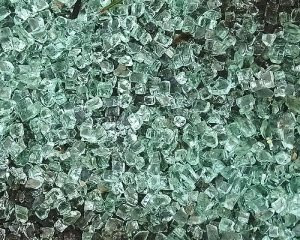
Green up your life by doing something creative to help the environment! This is an exploration into using recycled glass to make sculptural pieces, tableware, and architectural elements. We will delve into multiple techniques, including casting, fusing and slumping. Glass chemistry, coloration, and firing temperatures will be explained for each particular application. It is a fantastic way to learn aspects of any warm glass work while focusing on recycling! Once you start down the path of recycled glass, you will see more and more opportunities for experimentation around you. No prior experience is necessary – you are encouraged to bring in materials you’d like to try…and you will leave with several very cool items!
Instructor: Erwin Timmers
Dates: Wed Evenings Sept 14, 21 & 28
Time: 7pm to 9:30pm
Tuition : $350
___________________________________________________
Class 1122 – Eco-Tables

This is your chance to venture into furniture-making for your home. We will focus on using recycled materials to create a side table. You will get an introduction to welding and then cut and weld a steel frame. You will then cast or fuse an incredibly cool glass top to give you a one-of-a-kind table of your own design. No prior welding or glass experience is needed but not discouraged. There are size limitations for the glass top – not to exceed 18″ x 18″.
Instructor: Erwin Timmers
Dates : Wednesday eves, Oct 12, 19, 26 and Nov 2
Time: 7pm to 9:30pm
Tuition: $400 per student (all materials included)
___________________________________________________
Class 1123 – Using Neon In Your Sculpture – Not Your Grandfather’s Neon
Neon doesn’t only come in a tube anymore! This is a great way to use neon in new ways! Expand your vocabulary of your sculptural glass by lighting up your forms. This class will focus on 2 areas. You must pick one:
A).Designing hollow sculpture for experienced flameworkers at a bench torch.
B). Fusers who would like to incorporate neon in bullseye or plate glass by creating a void. Very new idea!
The students will make hollow forms that will be filled and illuminated with noble gases (such as neon, argon, krypton, or xenon). The course will provide a basic understanding of neon. Demonstrations and discussions will encompass different gases, the effects of gas pressure (including plasma), different effects achieved by varying forms and transformer use. By the end of the workshop, you will leave with glass forms that are filled with gas and will illuminate the possibilities. Cut off date to register for this class will be OCT 1st!
Instructor: Jason Chakravarty
Dates: Columbus Day Weekend/ Sat-Sun-Mon /Oct 8-9-10
Time: 2 to 6pm each day
Tuition: $500 per student
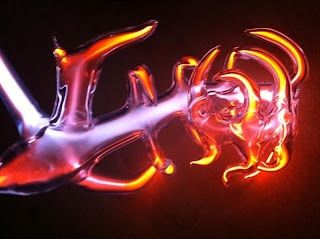
___________________________________________________
Class 1124 – Making Glass Sconces for your Home
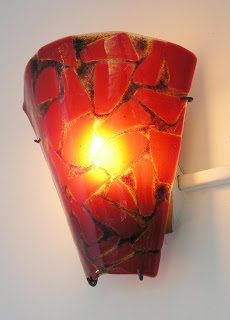
wall sconce by Nancy Donnelly
Are you looking to brighten up your life? Do you want to see your house in a new light? Well, come in and make your own in this class! You’ll learn to cut, fuse and shape glass into a sconce. You will design your own mold, and make the hardware to mount the light. You will also learn how to safely wire and install your new sconce. No glass or electrical experience is necessary.
Instructor: Erwin Timmers
Dates: Wednesday eves, Nov 9 &16
Time : 7pm to 9:30pm each day
Tuition: $300 per student (all materials included)
___________________________________________________
Class 1126 -Video As A Sculptural Medium
Have you been interested in the thought of working with video? Have you thought that maybe its time to add video to your artwork? Well, here’s the way! This 2 day workshop will help you begin your understanding of shooting and editing video. Using simple equipment, we will cover shooting, lighting, editing with iMovie and FinalCut, using video with current artwork, and narrative concepts. This class will be easier if you have a MacBook with iMovie or FinalCut loaded, or a PC Laptop with those programs. Come and get started with this adaptable artform! This class limited to 6 participants.
Instructor: Tim Tate / Pete Duvall
Dates: Sunday afternoons in Oct 23 & 30
Time : 1pm to 5pm each day
Tuition: $300 per student
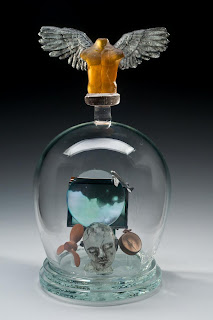
___________________________________________________
Class 1127- Work At Your Own Pace / Open Studio
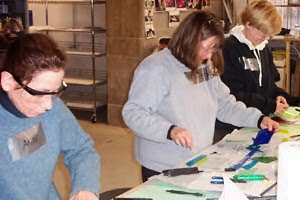
Already know the basics of casting or fusing? Open Studio gives each student the opportunity to work independently in a world class studio. Tuition includes a kiln firing per session, clear base glass and colored scrap glass, use of studio tools.
Instructor: Studio Staff
Dates: Wed/Thurs/Sat afternoons (call to confirm appointment)
Time: 1pm to 5pm
Tuition: $300 for 4 sessions
_________________________________
For the list of NEW Fall 2011 Lampworking Classes – click HERE
__________________
Posted in 2011, cool class, electronics and glass, fall class schedule, new class, tech, video
>

100 Artists of Washington, DC / F Lennox Campello
Schiffer Publishing
ISBN: 9780764337789
The Washington, DC, capital region is not only home to some of the best art museums in the world, hundreds of art galleries, non-profit art spaces, alternative art venues, and art organizations, but it also supports one of the best visual art scenes in the nation. Celebrating this art scene, award-winning artist and prominent critic and commentator, F. Lennox (Lenny) Campello, has compiled works by 100 leading contemporary visual artists who represent the tens of thousands of artists working in this diverse region. Equally diverse are the artistic styles and media you will see in this new book, the first of its kind for the capital area. With more than 730 works of art, Lenny offers a primer for both the savvy art collector and the beginning collector, highlighting his selection of emerging artists who deserve more attention.
As part of the book release events, there will be a party held at one of Washington, DC’s leading art gallery; Conner Contemporary, on Saturday, June 23, 2011.
You might remember last year when Lenny announced that he was retained by Schiffer Publishing to edit and create the “100 Artists of Washington, DC” book as part of their series on national artists, that a fair bit of controversy and debate arose in various newsmedia and blogs, including Lenny re-writing Kriston Capps’ original Washington City Paper article with a different tone. Now that the book is out, we can see if the brouhaha was warranted. The book publisher, Schiffer Books, has also just released a “100 Artists of the Mid-Atlantic” book that includes artists from the DC region – but authored by E. Ashley Rooney. An interesting note – there are few artists that are included in both books – notably, the directors of the Washington Glass School – Michael Janis, Tim Tate and Erwin Timmers were each selected by the authors for inclusion in their books.
100 Artists of Washington, DC Book Release Party
Saturday, July 23, 2011
3:00pm to 5:00pm
Conner Contemporary Art
1358 Florida Ave, NE
Washington, DC
Can’t wait for the bookstores or Amazon (where its already out of stock!)? Click HERE to jump to Google search for sites that have the book!
Here are the 100 DC area artists:
Ken Ashton
Joseph Barbaccia
m. gert barkovic
Holly Bass
John Blee
Margaret Boozer
Adam Bradley
Scott G. Brooks
Lisa Montag Brotman
iona rozeal brown
Wayne Edson Bryan
Renee Butler
Judy Byron
Colby Caldwell
Rafael J. Cañizares-Yunez
Chan Chao
Zoe Charlton
William Christenberry
Manon Cleary
Mary Coble
Danny Conant
Kathryn Cornelius
Rosemary Feit Covey
Jeffry Cudlin
Richard Dana
Adam de Boer
Rosetta DeBerardinis
David D’Orio
John Dreyfuss
William Dunlap
Mary Early
Victor Ekpuk
Dana Ellyn
Fred Folsom
Helen Frederick
Rik Freeman
Chawky Frenn
Victoria F. Gaitán
Carol Brown Goldberg
Janis Goodman
Pat Goslee
Muriel Hasbun
Linda Hesh
Jason Horowitz
James Huckenpahler
Melissa Ichiuji
Martha Jackson Jarvis
Michael Janis
Judy Jashinsky
Mark Jenkins
Margarida Kendall Hull
Craig Kraft
Sidney Lawrence
Amy Lin
Barbara Liotta
Malik Lloyd
Laurel Lukaszewski
Maxwell MacKenzie
Akemi Maegawa
James W. Mahoney
Isabel Manalo
Percy Martin
Carolina Mayorga
J.J. McCracken
Donna McCullough
Patrick McDonough
Alexa Meade
Linn Meyers
Maggie Michael
A.B. Miner
Brandon Morse
Lida Moser
Cory Oberndorfer
Byron Peck
Jefferson Pinder
Michael B. Platt
Susana Raab
W.C. Richardson
Marie Ringwald
Nate Rogers
Robin Rose
Erik Sandberg
Matt Sesow
Foom V. Sham
Joe Shannon
Jeff Spaulding
Molly Springfield
Dan Steinhilber
Lou Stovall
Tim Tate
Lisa Marie Thalhammer
Erwin Timmers
Ben Tolman
Kelly Towles
Novie Trump
Frank Warren
Joe White
John Winslow
Colin Winterbottom
Andrew Wodzianski
Click HERE to jump to a Pink Line Project interview with Lenny Campello by John Anderson on what started this project and how the artists were chosen.
Posted in 100 washington artists, book, conner contemporary, f lennox campello, Lenny Campello
>
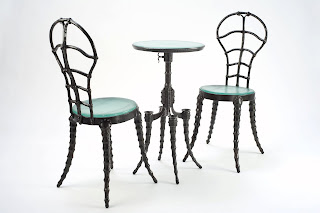
Chris Shea forged steel, cast glass
It’s official: The Renwick Gallery of the Smithsonian American Art Museum has acquired three of Chris Shea’s cast glass-and-steel furniture pieces for their permanent collection. The two chairs and a table will be on exhibit at the Renwick in DC this Fall. Congratulations Chris!
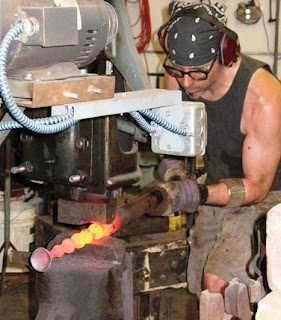
Chris studied blacksmithing and silversmithing at the Appalachian Center for Crafts in Tennessee, and he holds a Bachelor of Arts degree from Cornell University. A professional artist and blacksmith for over 10 years, Chris designs and creates hand-forged furniture, sculpture and architectural metalwork at his studio in Brandywine, MD.
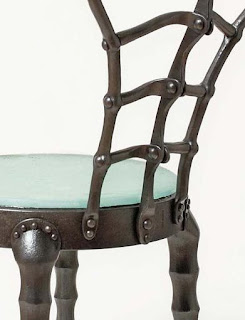
click on image to jump to a slideshow of Chris’ process.
Chris has been making a number of cast glass panels that will be featured in his newest work – the Demilune Table – hopefully to be featured on the Glass School blog!
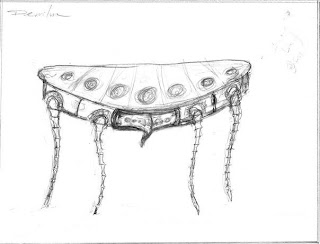
 To jump to Chris’s website – click HERE.
To jump to Chris’s website – click HERE.
Posted in blacksmith, chris shea, glass and steel
>The recent posting about 3D printer technology and the resulting roving robots amuck in the Sahara, leaving a trail of glassware had generated a lot of inquiries into the 3D technology (and interest in how does one get access to this). Recently, a high-tech fabrication/prototype workshop has opened in Washington, DC: Fab Lab DC
From their website:
Fab Labs provide access to prototype tools for personal
fabrication, like a personal computer that can output
functional objects instead of images on a screen.
The labs have spread from inner-city Boston to Africa and
Norway, with projects tackling applications in areas
including healthcare,agriculture, housing, and communications...
In the spirit of MIT’s Fab Lab community outreach project,
FAB LAB DC will create a high-tech,fabrication
laboratory/community workshop in the heart of the
Nation’s Capital to advance creativity, innovation, and
collaborative projects. FAB LAB DC will serve and foster
the creative community by providing access to digital
fabrication technology, rapid prototyping,and the global
Fab Lab network.
There are some other online sites that allow one to upload files that
they will fabricate and ship to you - like Shapeways - a
Netherlands based site that now has opened offices in NYC.
Shapeways also has glass prototype facilities - but they have a
list of of rules for this process.
Click HERE to jump to Fab Lab DC's website.
Click HERE to jump to Fab Lab blog.
Posted in 3D printer, fab lab dc, prototype, sintar
>

The hip and trendy culture blog – ReadysetDC just covered the Washington Glass School 10th anniversary exhibition at Long View Gallery with an in-depth review of the show with insights about the Washington Glass School directors and DC GlassWorks’ Dave D’Orio.
Writer Natalie Stemp has some thoughtful takes on the changing status of glass as a sculptural medium:
“Let’s play a game. If I say “canvas”, what do you picture? You probably imagine art – Vermeer, Seurat, Picasso, Mondrian, maybe even DC’s Chris Martin. What if I say “glass”? Do the words “sink, wine, stained” instantly light up like neon signs? If so, you are not alone, but the Washington Glass School (WGS) wishes you were.
The Studio Glass Movement was founded just 50 years ago, so it is not surprising that most of us still perceive glass art strictly as decorative. In fact, the WGS – the face of the Movement in DC along with DC GlassWorks – celebrated its 10 year anniversary last weekend with a reception at Longview Gallery that concluded a month-long retrospective exhibition. After touring the exhibition with Michael Janis, co-director of WGS, I find it difficult to understand why the art establishment struggles to include consistent representation of expressive glass art at preeminent shows and museums. Think about the museums you visited in the past year: did any of them include contemporary glass art in its curation?…”
Natalie’s article contains many photos taken from the exhibition and comments about the featured artist’s work.
ReadysetDC is an online zine dedicated to the creative revolution and movement that is happening in Washington, DC.
Click HERE to jump to ReadysetDC’s article.
Posted in 10th anniversary, glass sculpture, long view gallery, natalie stemp, readysetDC, studio art glass, washington glass school
>Solar Sintar
Markus Kayser – Solar Sinter Project from Markus Kayser on Vimeo.
If you have been like me, you spend every possible hour in the studio – head down, working on artwork and projects. The world, my friend, however, has been marching on. New technologies are reshaping how art is made.
In this brave new world, 3D printers top every sculptors must-have list.
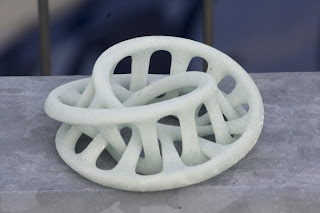
The model above is Emmanuel Lattes’ Double Möbius. 3D printed in glass. Glass frit powder is mixed with a binding agent that allows the work to be modeled and built by layers in a 3D printer. The work is then carefully loaded into a kiln and fired, fusing the powder and burning away the binding agent. Tho a bit more fragile and rougher than traditional glass forming, the possibilities of computer assisted sculpture are incredible.
But to put all this progress into perspective, a little history is in order. The first 3D printer was produced by Charles Hull in 1984, who utilized a patented stereolithography method for the print process. The basic approach for 3D printing is to create a layer of polymer for the desired 2D slice, cure that area, and then repeat to build layer-upon-layer. Hull’s technique involved creating a 0.0025-inch layer of liquid photocurable polymer that could be cured with a UV laser.
In 1988, the first commercially available 3D printer was officially launched by 3D Systems, which utilized a photo-optical acrylic resin. In the early 1990s, a number of other methods were developed, including fused deposition modeling that extruded thermoplastics for layering and multi-jet modeling, based on ink-jet printer technology. Techniques have also been developed that use powder and lasers. Over time, a multitude of companies across the world have sprung up offering their high-end printers combined with CAD software and scanners, allowing objects to be either scanned or designed from scratch.
In the above video, Markus Kayser goes into the Sahara with a solar powered printer to create 3D objects – including a bowl – by melting the sand that he scoops up. What an idea for the Glass School’s bowl class! (& class outdoors!). But, you may ask, what about annealing?
Awesome to get a glimpse of the future of both sculpture and sustainable design.
For more about 3D printing – click HERE to jump to a recent article in The Economist.
Posted in 3D printer, solar, sustainable design, technology
>This posting is the first of a new feature for the Washington Glass School blog: ‘The Process’.
The occasional series will present a photo documentation of a project from start (or at least when we remembered to get a camera going) to finish, highlighting the steps, process and techniques involved. Mistakes, dramas, and screw-ups will be magically deleted from the documentation postings, naturally.
Our first of the series is a focus on the making of National Geographic’s newest award – the ‘National Geographic Arts Ambassador for the Environment Award’ . The recipient for the inaugural award is musician Jack Johnson.

Uber-mellow singer-songwriter-surfer-filmmaker Jack Johnson has dedicated himself to environmental causes, including educational initiatives and promoting eco-friendly touring in the music industry.
Musician and environmental activist Jack Johnson was to receive the newly created “Arts Ambassador for the Environment Award,” presented to an individual in the entertainment field who has demonstrated leadership in environmental and cultural conservation by elevating issues of sustainability and inspiring audiences to care about the planet. Jack Johnson grew up surfing and playing guitar in Hawaii. He released his first album in 2001 and, in the last ten years, has released 5 more albums that have sold over 20 million copies worldwide. In 2003, Jack and his wife Kim founded the Kokua Hawaii Foundation and Kokua Festival to support environmental education in Hawaii’s schools and communities. In 2008, Jack donated 100% of his tour profits to establish the Johnson Ohana Charitable Foundation, an endowment founded by Jack and Kim Johnson to support environmental, art and music education worldwide. These tour profits, along with Johnson’s personal charitable activities, have resulted in millions donated to charity since 2001.
In keeping with the environmental conscious theme, the National Geographic Society asked for an award that was made from recycled glass, and a number of designs were studied.

As the award was to be yearly, the concepts had to allow for art ambassadors that worked in areas of interest such as “oceans” or “forests” or “wildlife” and be able to relate equally to those themes. Early on, a globe shape was favored by the National Geographic award committee. Recycled float (window) glass was to be cast using the lost wax process. The National Geographic committee stipulates that the cast glass globe be removable, and options for the support base are explored.
The Process:

Spraying the clay original with a mold release agent.

Pouring the rubber mold compound around the original clay form.

After setting up – preparing to cut open the rubber mold and remove the clay form. After removal of the clay, melted wax is poured into the rubber mold, and a wax copy of that form is removed.

The wax original.

The wax original is coated with with layers of a plaster/silica mix, building up the form until a solid covering is achieved.

The plaster/silica form is allowed to set up. Once hardened, the wax is melted out – the essence of the ‘lost wax’ process.

Checking the mold for any wax residue.

Recycled float glass is cleaned and made ready for casting.

The molds are loaded into the electric kilns and glass placed into ceramic pot reservoirs. The glass globes go through a six day annealing cycle.

After the glass is cooled, the forms are removed from the kilns.

The molds are broken open, being mindful of the glass contained within.

Chipping away at the plaster mold.

The glass is cleaned and coldworked. Rough spots are ground and polished to a shine.

Robert Kincheloe evaluates the level of shine on the glass globe continents.

While the cast glass globe is being coldworked, the base for the globe and the award nameplate is being created. A custom ceramic mold is shaped and fired. A flat blank made from recycled glass is fused and made ready to slump into the ceramic mold.

The glass base is fired in the kiln and coldworked to receive the glass globe.
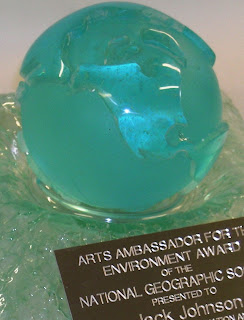
The base is fitted with a clear gasket to prevent chipping of glass.
Studio photos of the award and of the evening were promised by National Geographic – we will post once we get the shots!
About the National Geographic award night:
The theme of the National Geographic’s inaugural “Evening of Exploration” celebration was “Oceans,” and the event was attended by an all-star cast of explorers and other luminaries, including newly appointed National Geographic Explorers-in-Residence filmmaker James Cameron and marine ecologist Enric Sala, as well as other Explorers-in-Residence who presented the evening’s awards: oceanographer Robert Ballard, marine biologist Sylvia Earle, wildlife filmmakers Dereck and Beverly Joubert and population geneticist Spencer Wells.

In keeping with the environmental theme – the appetizers were made from “invasive species” – like snakehead fish sushi.
Besides Jack Johnson, the other honorees included: Environmental anthropologist Kenny Broad and the late underwater photographer Wes Skiles were named “Explorers of the Year,” a new award presented in recognition of their extraordinary achievements in exploring and documenting the Blue Holes of the Bahamas in 2010. The National Geographic “Chairman’s Award” was presented to IBM for significantly advancing knowledge of the world through its research partnership with National Geographic on the Genographic Project, which is mapping the migratory history of humans.
The master of ceremonies was Wolf Blitzer, CNN’s lead political anchor. Following the awards presentation, Johnson performed songs for the crowd.
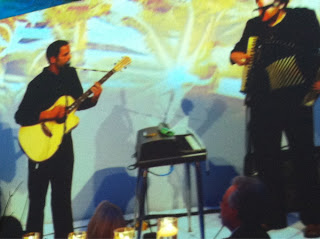
Jack Johnson performing at the National Geographics award gala.
Proceeds from the evening will benefit National Geographic’s Explorer programs, comprising the Explorers-in-Residence, Fellows and Emerging Explorers. The “Evening of Exploration” was the culmination of the two-day National Geographic 2011 Explorers Symposium, an annual event at which National Geographic Explorers-in-Residence, Fellows, Emerging Explorers, grantees and others affiliated with National Geographic gather to share findings of their research and fieldwork and take part in panel discussions.
Posted in "national geographic society", arts ambassador, custom glass award, environment award, glass sculpture, jack johnson, lost wax casting, lost wax process, national geographic, recycled glass art
>
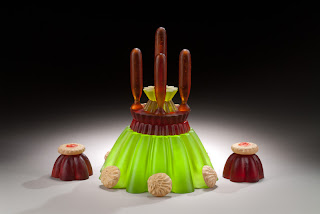
Debra Ruzinsky
Sugar Bomb #3; Cast glass, 2011

Debra Ruzinsky
Bombshell, 2011
Debra Ruzinsky‘s cast glass artwork was recently praised by the Washington Post Art Critic Michael O’Sullivan in a review of glass sculpture that was on exhibit at Long View Gallery. In the review, Michael wrote: “My guilty pleasure sits all the way in the back of the 5,000-square-foot gallery… There you’ll find two small sculptural works by artist Deborah Ruzinsky, mounted on pedestals in front of large glass doors that, on sunny days, suffuse the room with light. The works’ titles, “Sugar Bomb #2” and “Sugar Bomb #3,” are apt. Cast in green and orange glass using Jell-O molds and artillery shell casings, they’re pure, explosive eye candy.
Staring at it, I feel like a monkey in front of a ball of shiny, shiny tin foil. Isn’t contemporary art supposed to be ugly — or at least less superficial?…
On the one hand, glass is pretty. It’s hard not to like the way it looks: the luminous color, the way it plays with light. On the other hand, maybe glass is only pretty. How do we know that the beauty is also capable of brains? The rest of the show is proof that it is.”
Debra was in the glass school this weekend coldworking her pieces of cast glass sculpture for a show at Vermont’s Brattleboro Art Museum this July 15-Oct 23. The group show “Glass in All Senses” promises to be an amazing collection of pieces by diverse artists. Debra’s work is from her sculpture series “Sweet Escape”. The work will feature cast glass sweets and rockets.

Debra checks her cast glass wafer ramp for smoothness.

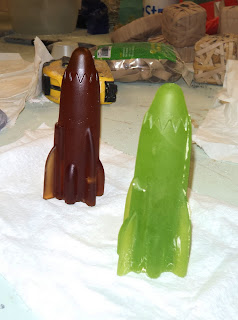

Check back later for links to the Brattleboro Museum show.
Posted in cast glass, debra ruzinsky, lost wax casting, michael O'Sullivan, washington post
>
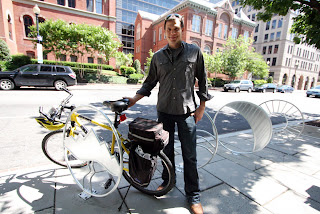
Patrick Truby with his bicycle rack design. Photo by Laura Wallach
Artist Patrick Truby was one of the designers of a unique bike rack that was recently installed in downtown Washington, DC to promote alternative and healthy transportation. Titled “Exploration”, the work is located at 17th and M St NW, outside of the the National Geographic Museum. The rack features stylized mountains, water, the sun and the moon. Unveiling the new fixture was Golden Triangle BID Executive Director Susan Norton, National Geographic Museum Director Susan Norton, Brookfield Properties Senior Vice President Greg Moyer and co-designer, National Geographic Museum Art Director, Alan Parente.
Patrick’s mixed media glass sculpture is one of the works at Gallery 555‘s show of sculptural work by students of the Washington Glass School, currently on exhibit thru June 30, 2011.
 The Washington Glass School 10th Anniversary Student Sculpture Exhibit
The Washington Glass School 10th Anniversary Student Sculpture Exhibit
Gallery 555dc
555 12th Street NW Lobby, Washington DC 20004
202-393-1409 or 240-447-6071
Gallery555dc.com
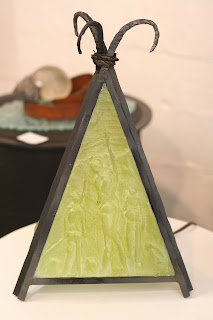
Cast glass and steel sculpture by Patrick Truby.
Congratulations Patrick & Alan!
Oh by the way – in case anyone wonders about how secure a “cool bike rack design” is – 
each rack has (4) 6” anchor bolts in the concrete and has one tamper-proof bolt. Someone who passes the rack on the way to work each morning says that it has been filled everyday.
Posted in gallery 555, patrick truby, student exhibition


























